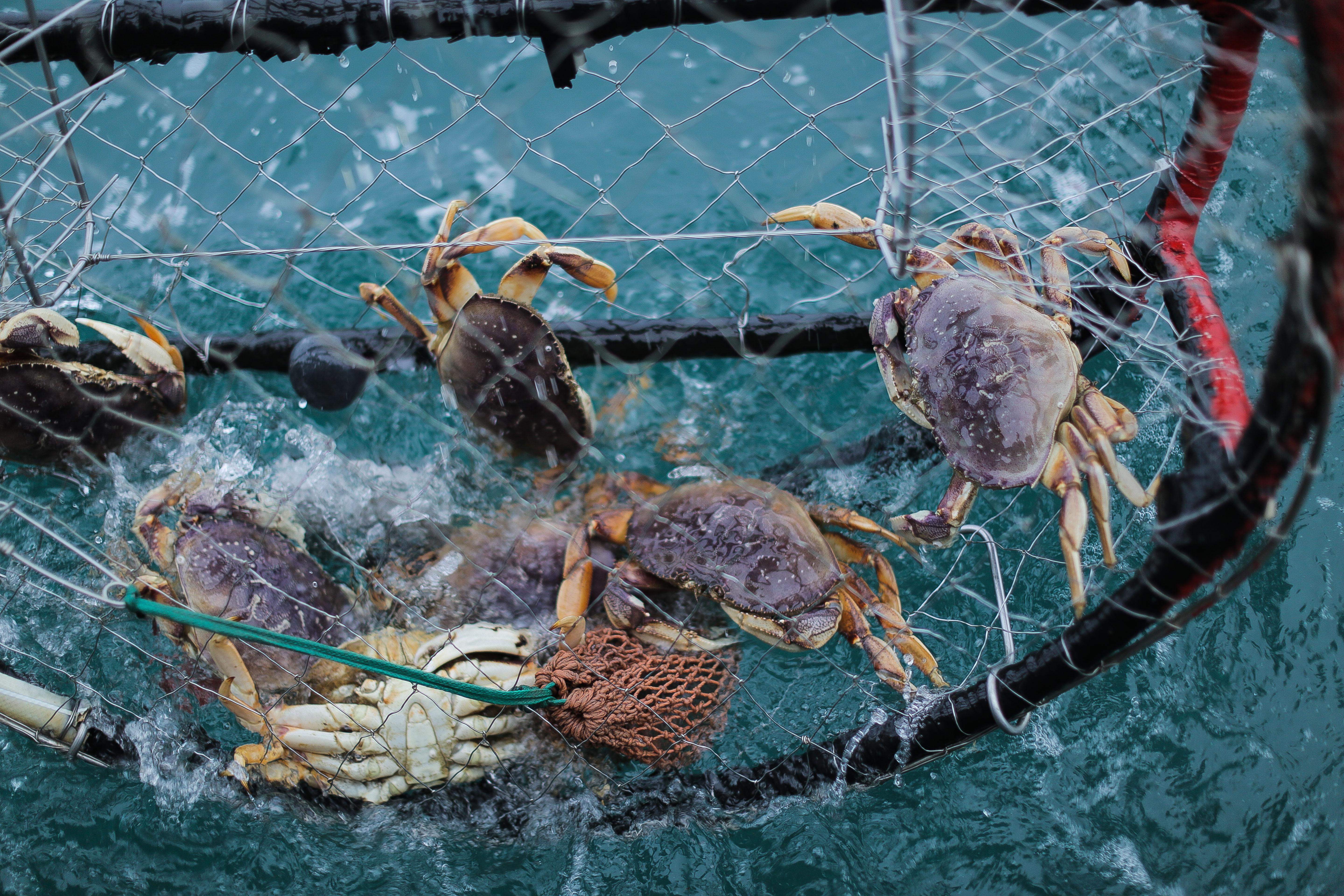
Dungeness crab caught in crab pot off of Port Orford, Ore., on May 13, 2018.
Arya Surowidjojo / OPB
Low oxygen levels measured off the coast of Oregon and Washington are raising fears of large “dead zones” that could wipe out crabs and bottom-dwelling fish within.
The National Oceanic and Atmospheric Administration, or NOAA, announced Wednesday that researchers have detected unseasonably low oxygen levels in a large area off the Pacific coast.
Year after year of low oxygen levels starting in the early 2000s led researchers to determine Oregon now has a “hypoxia season” just like it has a fire season — and this year’s hypoxia season has come far earlier than usual.
That could have major implications for coastal economies, particularly those tied to Dungeness crab.
“When it starts really early, we’re giving [oxygen levels] many more months to get lower and [the dead zone to] get bigger in space,” said Francis Chan, who directs the Cooperative Institute for Marine Resource Studies at Oregon State University.
Related: Port Orford's season of crab and crisis
According to NOAA, dead zones occur as winds pick up in the spring and summer, driving cold water from the bottom of the ocean toward the surface. That contributes to blooms of phytoplankton, which later die and sink to the ocean floor. Bacteria consume oxygen while decomposing the plankton.
Marine creatures like crabs that can’t escape the low-oxygen zone are left to die.
“It’s a relatively natural feature, but it’s intensified over time,” Chan said. “We know that at some point, [oxygen] gets too low and marine life actually do suffocate.”
The start of hypoxia season is marked by the upwelling of cold bottom water. Winds initiated that upwelling this year around March. Chan said that’s the earliest Oregon ocean-watchers have seen in 35 years.
Related: Meet the delicious purple sea creature destroying Pacific kelp forests
Two of the worst hypoxia seasons off the coast of Oregon occurred in 2006 and 2018. Crab fishermen reported pulling up pots with suffocated crabs unfit for consumption.
“Unfortunately, this is another one that’s looking like it could be a landmark year for these hypoxia zones,” said Tim Novotny, communications manager with the Oregon Dungeness Crab Commission.
Hypoxic zones can kill off not just 4-year-old crabs — which are often what seafood-eaters find on their plates — but also younger crabs. That can affect crab catches years down the line, Novotny said.
Researchers, with the aid of fishermen, are seeking more data to determine the size and intensity of low-oxygen zones off the coast this year. Chan spoke to OPB while at sea on a research vessel, gathering additional measurements.
He said more people have eyes on the ocean now, and researchers hope to be able to map where and when hypoxic zones develop off the coast.
The Oregon Legislature passed a bill this session allocating $1.9 million for research and monitoring of hypoxia and ocean acidification off the coast.
“Any kind of data that comes in is gold, as far as we’re concerned,” Novotny said. “You can’t fight what you don’t know.”
Modeling from the Cooperative Institute for Climate, Ocean and Ecosystem Studies forecasts a large hypoxic zone off the Northwest coast lasting through the fall of this year.


